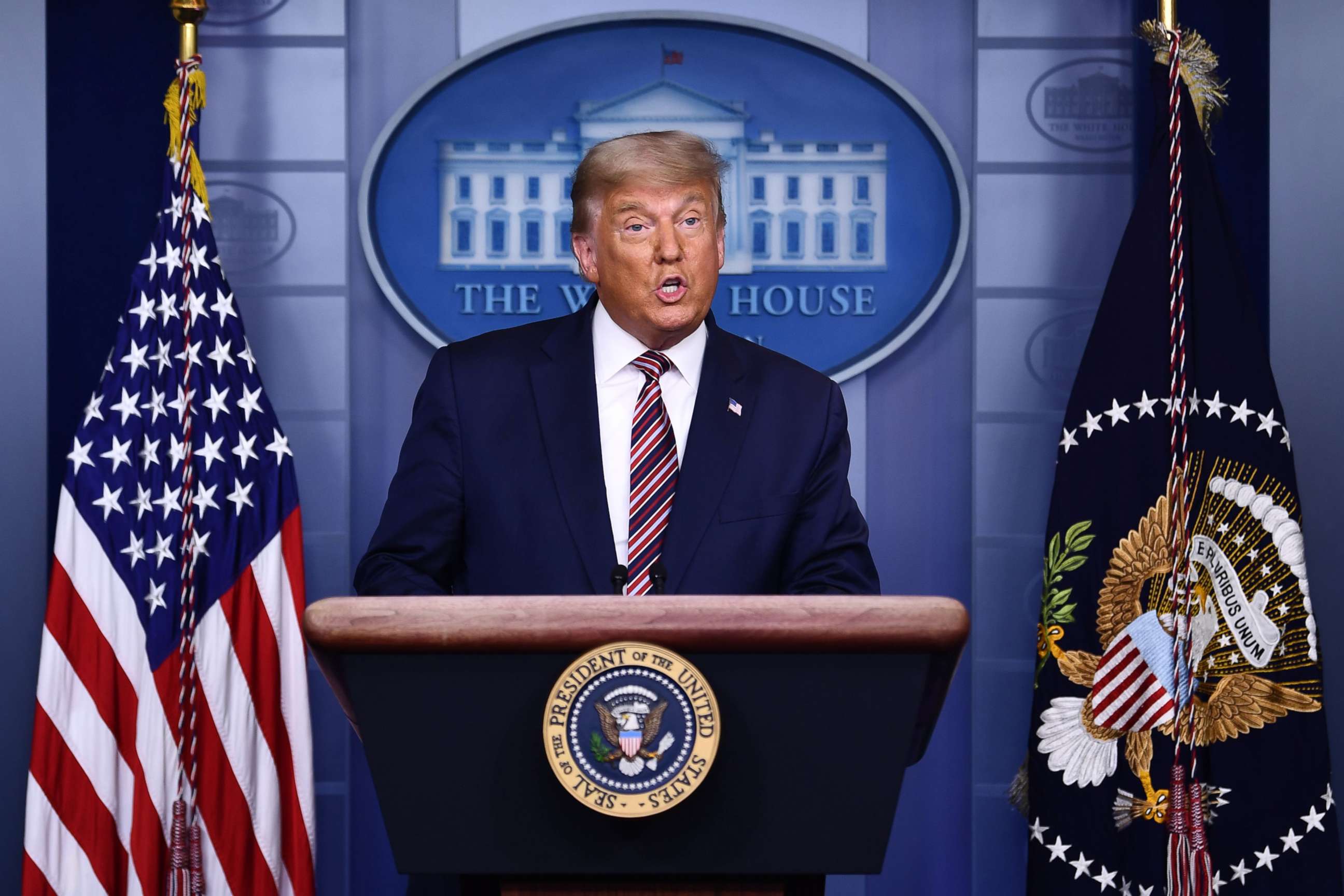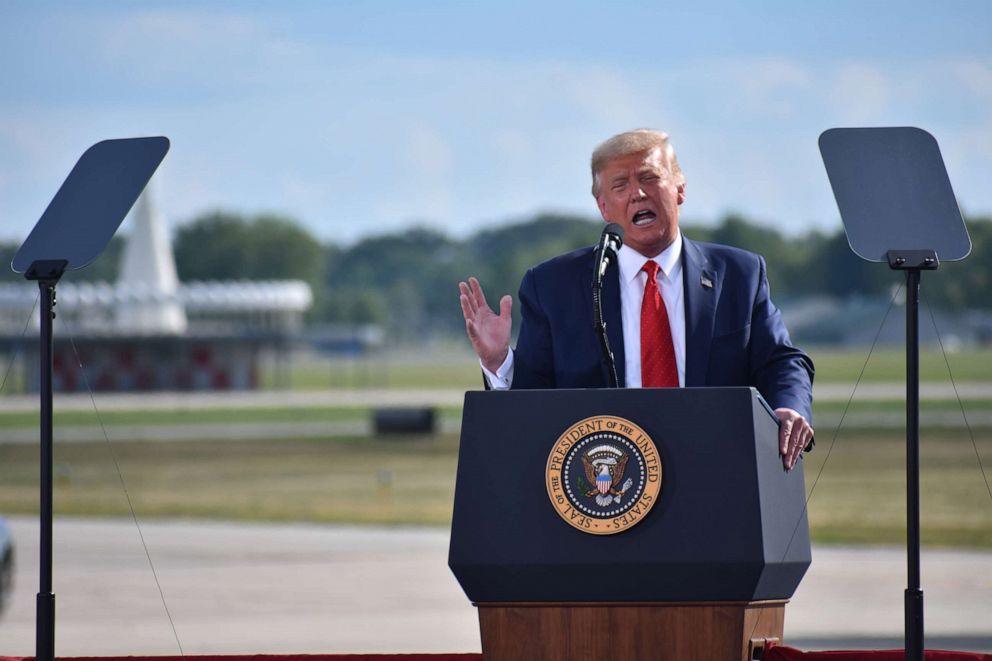Trump has longstanding history of calling elections 'rigged' if he doesn’t like the results
The president has refused to acknowledge his loss to Joe Biden.
It's been over a week since the polls closed on Election Day, and a few days since President-elect Joe Biden was declared the winner of the 2020 presidential race, and still, President Donald Trump has not accepted the results of the election.
What Trump has done is continue to double down on his claims that this year's election was "rigged" and there were massive amounts of voter fraud nationwide that cost him his victory.
There is no truth to the claims that there was widespread voter fraud in the election, yet the Trump campaign and the Republican National Committee are pursuing lawsuits in several states claiming that there was. Despite their complaints, they have not provided any evidence of fraud or corroborated any of the president's claims.
This is not the first time Trump has made claims about election fraud when the results do not please him. It has been a part of his playbook for years -- long before he entered politics.

2012 general election
On election night in 2012, when President Barack Obama was reelected, Trump said that the election was a "total sham" and a "travesty," while also making the claim that the United States is "not a democracy" after Obama secured his victory.
Trump even wrote on Twitter, "We can't let this happen. We should march on Washington and stop this travesty. Our nation is totally divided!"
There was no truth to the claims that Obama's election victory against Sen. Mitt Romney was a "sham" and the democratic process played out in 2012 as it is doing now and has with every election, as the votes are tabulated and certified by states and local officials.
Trump also previously called for the American people, presumably those who didn't vote for Obama, to "fight like hell and stop this great and disgusting injustice," because "the world is laughing at us."
Trump first challenged the election results in 2012, continued to do so in 2016 and has now done it again in 2020.
2016 primary and general election
When he ran to become the Republican Party nominee in 2016, he attempted to cast doubt on the election process. Trump said he did not lose the Iowa caucuses in 2016 to then candidate Sen. Ted Cruz, because he "stole it."
"Ted Cruz didn't win Iowa, he stole it. That is why all of the polls were so wrong and why he got far more votes than anticipated. Bad!" Trump wrote on Twitter at the time.
He also wrote, "Based on the fraud committed by Senator Ted Cruz during the Iowa Caucus, either a new election should take place or Cruz results nullified."
Cruz was the clear victor for the Republican Iowa caucus in 2016, as he defeated Trump by three percentage points.
In October 2016, just weeks before the general election, Trump wanted to cast doubt on the results by tweeting, "The election is absolutely being rigged by the dishonest and distorted media pushing Crooked Hillary - but also at many polling places - SAD," without providing any evidence for the claim.
Even after the election ended and it was clear that Clinton had lost and conceded victory to Trump, the president didn't stop lamenting over the election he had won. He quickly made the claim that he also won the popular vote over Clinton, which is something that did not happen.
"In addition to winning the Electoral College in a landslide, I won the popular vote if you deduct the millions of people who voted illegally," said Trump.
The president lost the popular vote to Clinton by nearly 3 million votes, and there was no evidence of voter fraud then, just as there is no evidence of voter fraud now.

2020 general election
Fast forward to today, Trump took to his favorite platform, just moments before major media outlets had projected Biden the winner in this year's election, and falsely tweeted, "I WON THIS ELECTION, BY A LOT!"
That tweet was flagged by Twitter because Trump was not declared the victor, and because for months since his rally on Aug. 17 in Oshkosh, Wisconsin -- when he famously said, "The only way we're going to lose this election is if the election is rigged" -- Trump has been attempting to cast doubt on the American electoral process.
Trump continued to attack mail-in ballots and absentee ballots well into the fall months so that when the ballots were to be tabulated, he could cast doubt and speculate that he was the victim of fraud due to the vote-by-mail system.
On Twitter, the day after Election Day, as Biden's lead was becoming more evident in several states, Trump tweeted, "They are finding Biden votes all over the place — in Pennsylvania, Wisconsin, and Michigan. So bad for our Country!'
The next day, the president made the claim that he has always said mail-in ballots are not to be trusted.
"I've been talking about mail-in voting for a long time. It's -- it's really destroyed our system. It's a corrupt system. And it makes people corrupt even if they aren't by nature, but they become corrupt; it's too easy. They want to find out how many votes they need, and then they seem to be able to find them. They wait and wait and then they find them," Trump said two days after Election Day.
As mail-in ballots continued to be counted, states like Pennsylvania began to show a clear Biden lead.
In the days after Election Day, Trump continued to make falsehoods on Twitter, which the social media platform quickly flagged. "WATCH FOR MASSIVE BALLOT COUNTING ABUSE...REMEMBER I TOLD YOU SO!" he tweeted, claiming that ballot harvesting took place and he was right about the potential of it happening.
Trump has stuck to this playbook for years; however, his claims have never prompted a meaningful change in the election process.
This time, the president is taking his claims through the legal system with no evidence to back them up. Meanwhile, the campaign is continuing to raise money for the battles, as it's clear the president isn't willing to give up quickly.
This report was featured in the Wednesday, Nov. 11, 2020, episode of “Start Here,” ABC News’ daily news podcast.
"Start Here" offers a straightforward look at the day's top stories in 20 minutes. Listen for free every weekday on Apple Podcasts, Google Podcasts, Spotify, the ABC News app or wherever you get your podcasts.



